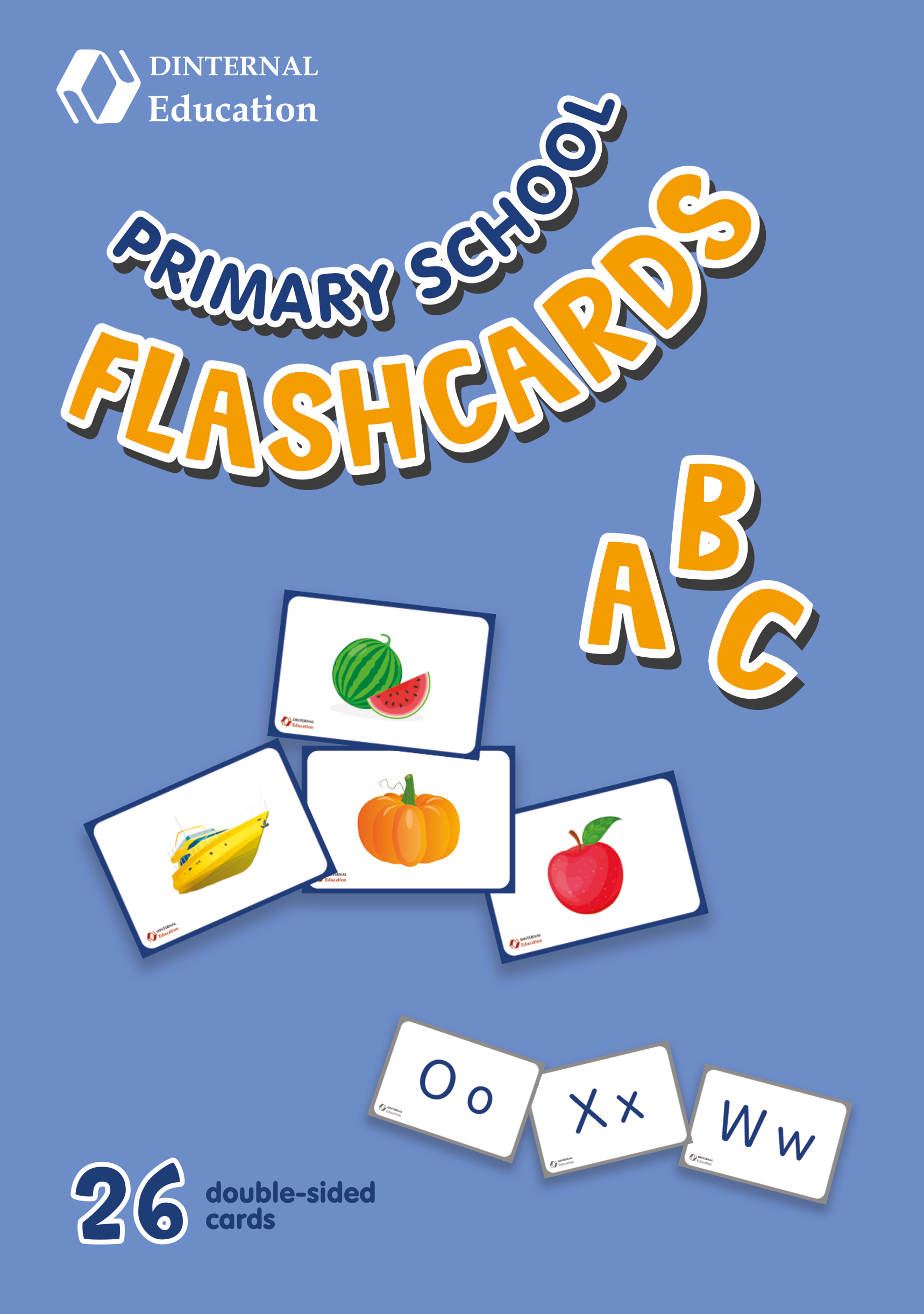English alphabet for kids: the best ways to learn
Oleksandra Kulish
Book expert
Knowing a foreign language opens up many opportunities for a person. That’s why many parents try to introduce their children to English as early as possible. Learning the alphabet of a foreign language is the foundation from which the incredibly useful skill of language acquisition begins — a skill that will be a great advantage in future education.
Every language has its own features. The differences between the English and Ukrainian alphabets can sometimes make it harder for children to absorb new knowledge.
Letters can be pronounced differently depending on the word, and some of them sound similar, which can make learning more challenging. To make the process enjoyable and effective, it's important to use engaging methods, interactive materials, and high-quality children’s books in English. Through fairy tales, poems, and vivid illustrations, kids absorb new information more easily.
Let’s explore when to start introducing your child to the English alphabet, how to choose the right textbook, and what methods can turn learning into a fun game.

When is the best time to start learning English letters for effective acquisition?
Developmental characteristics and a general interest in new information are the two key factors in deciding when to begin the language journey. In general, there are several periods when parents decide to start teaching a foreign language.
- Early start (ages 2–3). At this stage, children are great at remembering new things through play. It’s best to use special games or learn through songs and spoken language.
- Preschool age (ages 4–6). This is an ideal period for introducing letters because the child already speaks their native language well, can focus, and repeat material.
- School age (6+ years). If the child hasn’t been introduced to English before this age, there’s no need to worry. Lessons can be based on reading simple books and using textbooks that help quickly catch up. For instance, English school preparation tests are a great way to acquire basic knowledge without memorization.
The key is not to force but to engage. Learning letters should be fun, dynamic, and interactive so that the child wants to continue learning on their own.
How to choose the right first English alphabet book for your child?
Choosing the first English alphabet book is an important step, as it determines how easily and enjoyably your child will be able to learn and improve their skills. Parents often hesitate between different options, as publishers offer a wide variety of manuals, flashcards, digital apps, and books. To avoid confusion, consider a few key factors.
Format of learning materials
The first English alphabet can come in various formats:
- Books with letters and handwriting practice. These are illustrated books where each letter is accompanied by colorful images and words. They’re perfect for children who enjoy flipping through pages and discovering new visuals.
- Flashcards with letters. Visual learning is an effective way to memorize new information. Cards can be used for games, word building, and other interactive tasks.
- Magnetic letters. These can be used to form words on a magnetic board or fridge, adding a playful element to learning.
If your child is interested in gadgets, you can install apps that make learning fun and help them effortlessly memorize English letters.
Visual design and layout
Young children retain information better when it’s presented in a bright and attractive way. Make sure that:
- The letters are clear and easy to read. Fonts that are too small or overly decorative can make learning harder.
- There are colorful illustrations. Images of animals, objects, or characters that start with the corresponding letter help build associations faster.
When choosing a book or flashcards, pay attention to paper quality and whether a translation is provided.
Age-appropriate content
For toddlers (ages 2–4), it’s best to choose large letters with simple illustrations, since they can’t yet focus on small details. For children aged 4–6, materials with short words and basic exercises are more suitable. If the child is older, you can gradually introduce interactive elements that encourage active use of new knowledge.
Additional Learning Elements
Some alphabet learning sets include additional tasks such as:
- Stickers that can be attached to specific letters;
- Tasks for drawing or tracing letters;
- QR codes that lead to videos or songs.
When choosing textbooks, make sure they match the child's interests. For example, if the child likes animals, it’s worth getting an alphabet book where each letter is associated with an animal. You can find high-quality guides and flashcards at Dinternal Education.

Fun Methods for Learning English Letters Without Rote Memorization
To help a child quickly memorize letters and their pronunciation, it’s important to use interactive and playful methods. Here are a few effective learning techniques:
- Songs and rhyming poems. Fun melodies help easily memorize letters and their sounds. Children enjoy repeating rhymes, which greatly improves their pronunciation.
- Alphabet flashcards. Visual materials are one of the best ways to develop skills. Flashcards with letters and pictures of words that begin with those letters will help create associations.
- Magnetic letter games. A board with magnetic letters allows children to form words, experiment with the alphabet, and memorize the material faster.
- Letter coloring books. Combining creativity with learning always yields great results. Children can color letters and objects whose names begin with them.
- Board games and bingo. Playing alphabet board games allows the child to reinforce their knowledge without feeling pressured by the learning process.
The most important thing when choosing a methodology is not to make the process dull or standardized. A natural and fun atmosphere of play is exactly what’s needed for the child to associate English with positive emotions. Avoiding a standardized approach and focusing on the child’s specific interests also helps improve effectiveness.
What Tasks and Activities Can Be Used for Effective and Fun Learning of English Letters with a Child?
Learning techniques for adults are not suitable for children. If you want to teach a younger “student,” it’s important to integrate various activities into the process that make it engaging.
The main goal is to turn learning into a game so that the desire to keep practicing doesn’t disappear.
Here are some methods that can make learning the English alphabet enjoyable and effective:
- The “Letter Hunt” game. Print or cut out letters from cardboard and hide them around the room. The task is to find all the letters and name them correctly.
- Alphabet puzzle. Using puzzles with letters promotes hand motor development and quick memorization of English letters.
- “Living letters.” Let the child try to form letters with their body or arrange them using objects (pencils, toys, ropes). This greatly develops memory and imagination.
- Air letters. Suggest drawing letters with the finger in the air or on sand — this will help better memorize their shapes.
- The “Find the Pair” game. Prepare cards with uppercase and lowercase letters, and have the child match the correct pairs.
- Singing and rhyming. Fun songs and rhymes about the alphabet help easily memorize not only the names of the letters but also their correct pronunciation.
- Cutting out letters. By cutting out letters from colored paper or magazines, the child not only practices them but also develops fine motor skills.
The main rule is to allow the child to play and experiment, not to force them to memorize letters mechanically.
Engaging and Relevant Tasks to Help Your Child Learn the English Alphabet Quickly and Easily
If you're looking for exciting tasks that can be adapted for different age groups, consider the following ideas:
- “Magic Letters.” You can draw the outline of letters with white or simple pencil. After that, ask the child to color in the outline, making the new letters appear on the paper as if by magic.
- Give the child two baskets: one for vowels (A, E, I, O, U), and the other for consonants. The task is to sort the letters correctly.
- “Animal Alphabet.” Each letter is associated with an animal: A — alligator, B — bear, C — cat, and so on. Together, draw animals and immediately learn their names in English.
- Instead of the traditional Twister, play letter Twister. Use sheets of paper with colored letters and ask the child to place their hands and feet on the corresponding “sectors.”
- “Build a Word.” Use magnetic letters or flashcards and ask the child to form simple English words.
- Ask the child to come up with names for toys in English. You can attach a colored sticker with a name to the toy’s belly or forehead. This will also help with better letter memorization.
These tasks not only help practice the alphabet but also develop thinking and memory. Additionally, you can replace cartoons in the native language with those dubbed in a foreign language. The same applies to bedtime stories.

Conclusion
Learning the alphabet of a foreign language should be fun, as it helps the child associate English with something pleasant. Interactive methods, quality materials relevant to the child’s age, and a varied approach will help the child perceive the process as a game, not a boring task.
It’s also extremely important to consider interests when choosing textbooks, games, and flashcards. The key to achieving effective results is not forcing the child to study when they don’t want to, but rather finding ways to make them interested.
The earlier the introduction to letters, the easier it will be to master English in the future. By using the right approach and quality literature, you can significantly improve reading, writing, and general language skills.
Learning the English alphabet can be easy and fun if the process is organized correctly and effective methods are used. In Ukraine, great materials for learning English can be found at Dinternal Education — in the catalog, you'll find 100% original textbooks.












